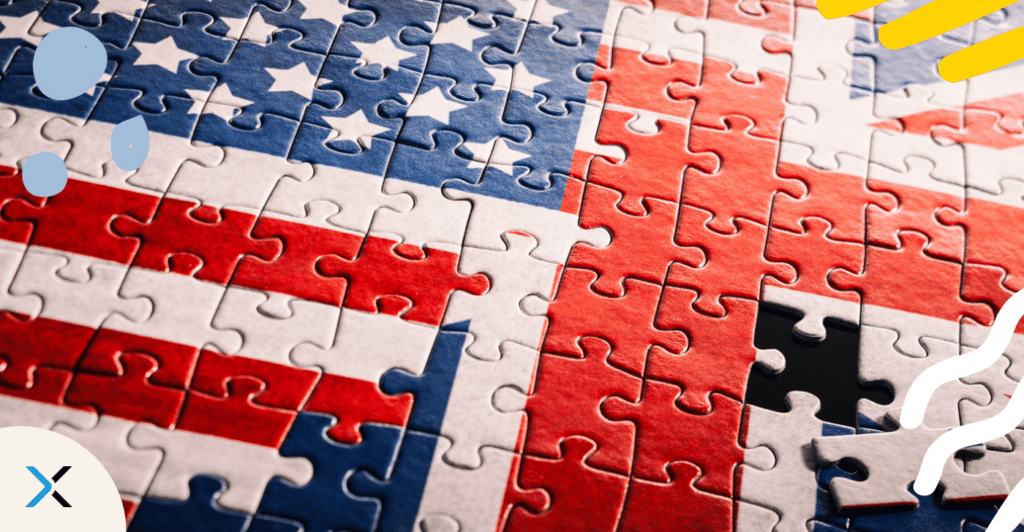Inclusive Language Matters: How To Ensure Your Customer Communications Reflect DEI Values

In theory, inclusive language is language that acknowledges diversity, conveys respect to all people, and avoids terms or expressions that might exclude, stereotype, or offend. But what is inclusive language in practice?
At its heart, inclusive language is about recognising that words matter. The way we write and speak can either affirm a person’s identity — including their gender identity, disability status, sexual orientation, ethnicity, or religion — or subtly reinforce harmful stereotypes. Inclusive language aims to use terms that support historically marginalised communities rather than alienate them.
When it comes to customer communication, inclusive language isn’t just a “nice to have”. It’s a reflection of your brand’s core values and a tangible way to support diversity and inclusion across every customer touchpoint. Businesses that prioritise inclusive language in their content signal their commitment to equality and demonstrate that they want all customers to feel comfortable and respected.
Inclusive language examples: The good, the bad, and the overlooked
Everyday language often reflects long-standing societal norms. As a result, many marginalised groups remain underrepresented or misrepresented in the way we communicate. From gendered job titles and ableist metaphors, to cultural assumptions and outdated terms. The language we use can unintentionally exclude or overlook people from diverse backgrounds.
Whether it’s non-binary individuals, people living with disabilities, or historically marginalised ethnic groups, their identities and experiences are frequently absent from the words and phrases that dominate our professional and public discourse. This lack of representation can reinforce harmful stereotypes, diminish belonging, and create barriers to meaningful inclusion.
Common phrases to avoid and why
Certain language, even if well intentioned, reinforces implicit bias or excludes people from underrepresented groups. For instance, describing someone as “hearing impaired” may seem appropriate, but many in the Deaf community prefer “deaf person” or “person who is deaf.” Similarly, saying “substance abuser” reduces someone to a condition — instead, say a “person living with a substance use disorder.”
Referring to someone’s “preferred pronouns” may also be misleading, as it implies that pronouns are optional. Instead, say “the pronouns a person identifies with.” These subtle shifts in terminology reflect a deeper understanding of human dignity.

Alternatives that centre clarity, respect, and belonging
Let’s have a closer look at inclusive terms that better reflect diverse groups and identities:
- Use “person with a disability” or “disabled person” depending on context and audience, rather than outdated labels.
- Choose gender-neutral terms like “chairperson” or “sales representative” instead of “chairman” or “salesman.”
- Avoid phrases like “Third World countries” or “minorities” — instead, say “developing countries” or “marginalised communities.”
Inclusive terms aren’t only more accurate, they also create space for everyone to feel represented.
Focus on hidden bias: Gender, ability, age, culture, and more
Even in the most well-meaning communication, implicit bias can show up in the form of assumptions about age, ethnicity, or disability. For example, writing “elderly people struggle with technology” ignores the abilities of many older adults. Describing someone as “not normal” for having a disability can be incredibly harmful.
This is why inclusive writing requires a critical eye — one that questions assumptions and considers how words will be received by people from all walks of life.
Example comparisons
Here are some side-by-side examples that show how inclusive language can replace biased or outdated expressions:
- “Guys” → “Everyone”
- “Crazy idea” → “Unexpected idea”
- “Normal person” → “Person without a disability”
- “Addict” → “Person living with a substance use disorder”
- “Transgendered” → “Transgender person”
Such small shifts in vocabulary help dismantle long-held stereotypes and make your content feel more human.
What gets missed in global teams or multilingual communications
Inclusive language must also be consistent across languages and cultures. In multilingual teams, direct translations can miss nuance or introduce offensive language. For example, certain gender-neutral terms may not exist in every language, which makes writing even more complex.
If your organisation communicates globally, inclusive communication means being aware of cultural differences and choosing terminology that aligns with your audience’s values. A phrase that’s respectful in English may feel exclusionary to non-native speakers or people for whom English isn’t a first language.
Building your inclusive language guide: Where to begin
Creating an inclusive language guide starts with more than just a list of terms to avoid, it’s about establishing a shared understanding of your brand’s values. To ensure lasting impact, your approach should combine thoughtful reflection with practical implementation across all teams and touchpoints.

Define clear, inclusive language principles for your brand
A good inclusive language guide starts with clear principles. These principles should reflect your organisation’s stance on diversity and inclusion — and help your teams identify words and phrases that support your audience rather than alienate them.
This could include recommendations around referencing ethnicity, gender, or disability — such as using “people with disabilities” or “non-binary person” — along with guidance on how to refer to groups based on religion or cultural background.
Turn your inclusive language principles into actionable, scalable rules
To make inclusive language a part of your content workflow, your inclusive language guide needs to move beyond definitions. It must include guidance on tone of voice, structure, and terminology and offer specific inclusive language examples in context.
Think of your inclusive language guide as a tool that empowers your team to practise inclusion — not as a list of forbidden words. When you equip writers with practical, easy-to-follow rules, inclusion becomes part of everyday practice.
Implement your digitised inclusive language guide into content governance software
Once your guide is established, it needs to be integrated where your teams actually write. This is where Acrolinx shines.
Acrolinx helps you digitise your inclusive language standards and embed them directly into your content processes. Writers get real-time feedback as they type — making inclusive communication second nature. Whether your team is crafting a chatbot script, a knowledge base article, or social media posts, Acrolinx safeguards your inclusive language principles across every channel.
How inclusive language improves the customer experience
Using inclusive language sends a clear message: Everyone is welcome. That’s powerful — especially for brands looking to build meaningful, long-term relationships with their customers.
When you use language that respects how people identify, you foster connection. When you avoid terms that exclude marginalised people, you create room for understanding. And when you embed inclusive values into your everyday writing, you show that your brand truly listens.
Inclusive communication helps people feel comfortable and seen — no matter their background, gender identity, ethnicity, or disability status. It acknowledges diversity and treats every person as worthy of respect.

How Acrolinx helps companies put inclusive language into action
Acrolinx offers more than guidance — it provides the structure, support, and visibility your organisation needs to create inclusive content at scale.
With Acrolinx, you can:
- Create a digitised inclusive language guide tailored to your brand’s DEI goals and audience needs.
- Support writers with real-time suggestions that promote inclusive language in every sentence.
- Avoid publishing content that doesn’t comply with your content standards and contains offensive language, bias, or outdated terminology.
- Track inclusive language performance over time with analytics that compare writing quality with DEI goals.
- Ensure alignment across departments and geographies by embedding your inclusive language guide into everyday tools.
The result? Content that reflects your values. Messaging that builds trust. And communications that support — not silence — the voices of diverse communities.
Want to build an inclusive language guide that scales with your organisation? Download the Acrolinx Inclusive Language Guide for tips on how to communicate inclusively or join our bi-weekly product demo to see Acrolinx in action and get all of your questions answered!
Are you ready to create more content faster?
Schedule a demo to see how content governance and AI guardrails will drastically improve content quality, compliance, and efficiency.
The Acrolinx Team




